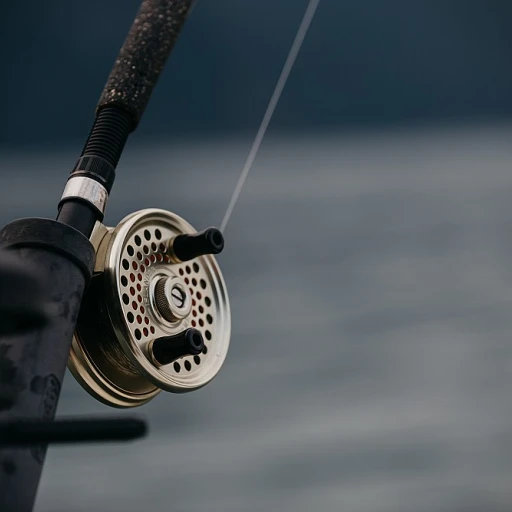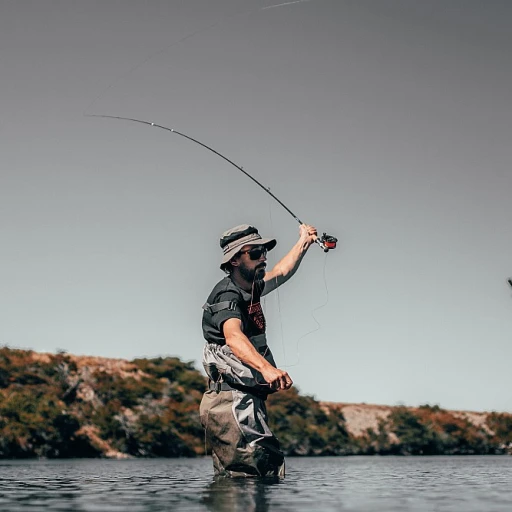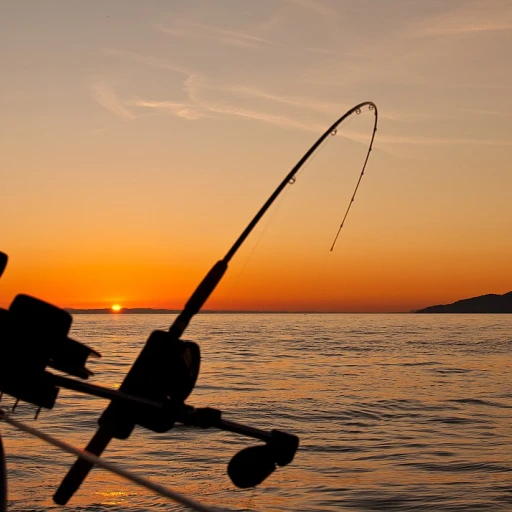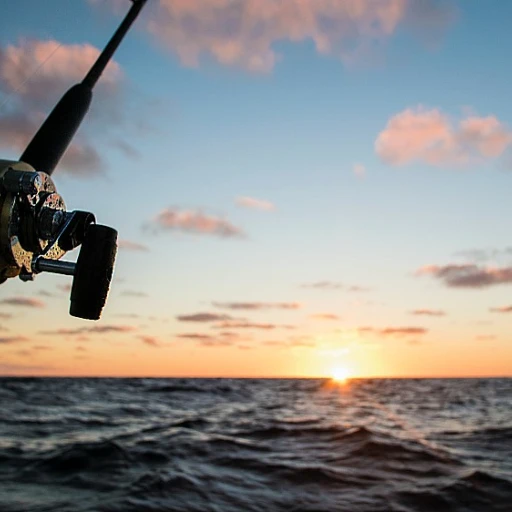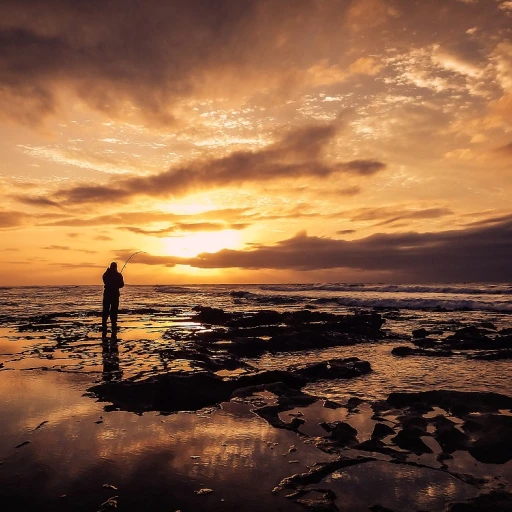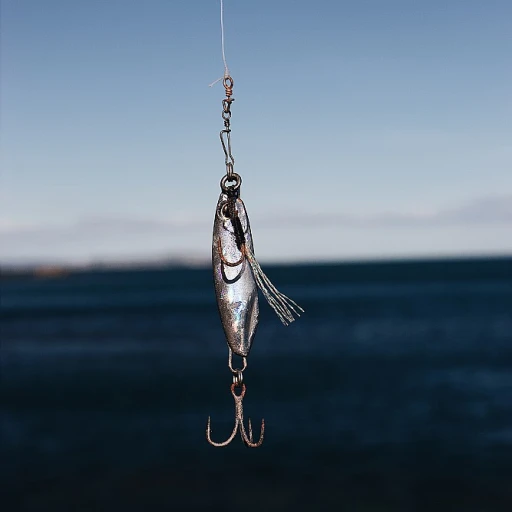
Understanding striped bass behavior
Behavior patterns of striped bass
Understanding how striped bass behave is key to improving your chances of landing them. Striped bass, or stripers, often move in schools and are voracious feeders that respond to specific conditions and stimuli. They are known to follow the tides, with the best fishing often occurring during tide changes. Some anglers swear by the magic of dawn or dusk, but striped bass can be caught any time of the day if the conditions are right.
Feeding habits and preferences
Striped bass prefer a variety of prey, including mackerel, herring, shad, and squid. They have strong predatory instincts, so using bait that mimics their natural prey can be highly effective. Striped bass are known to be opportunistic feeders, which means they take advantage of whatever food sources are most abundant. As a result, matching the hatch can be an effective strategy for striped bass fishing.
Environmental factors influencing striped bass
Striped bass are highly influenced by water temperature, salinity, and availability of food. They prefer a temperature range of 55 to 68 degrees Fahrenheit, which often guides their seasonal migrations. They tend to stay in deeper waters during the hotter months and move closer to shore when the temperature cools. Understanding these environmental preferences can help you determine where to fish and what bait to use.
Looking for more tips on choosing the best bait? Check out this guide on selecting bait that might work perfectly for your next striped bass fishing trip.
Topwater lures for striped bass
Why bass fishing enthusiasts love topwater action
There’s something almost magical about seeing a big striper explode on a lure at the surface. Topwater lures bring the thrill of striped bass fishing to life with their splashes and sudden strikes. If you're looking to experience this excitement, you’ll want to have these topwater lures in your tackle box.Pencil poppers: the classic choice for striped bass
Pencil poppers, like the iconic Cotton Cordell Pencil Popper, are a staple in any serious angler's arsenal. Their elongated shape and distinctive rattling sound can drive stripers wild. Known for their effectiveness in both calm and choppy waters, these lures are often used to target big stripers lurking near the surface. With weights varying from 1.5 to 3 ounces, they offer versatility in casting distance and water conditions. According to a study by the Massachusetts Division of Marine Fisheries, pencil poppers are particularly effective during the early morning and late evening when stripers are more active at the surface.Chug Norris: making noise, making waves
The Chug Norris popper, designed by Nomad Design, is another top contender. Its large, concave face creates a significant splash, mimicking struggling baitfish at the surface. This commotion can be irresistible to striped bass. With an average weight of around 2.5 ounces, it’s a solid choice for creating disturbance in the water. Expert angler and guide Captain Mike Hogan from Norwalk, Connecticut says, “The Chug Norris has been a game-changer for me, especially in rougher water where traditional poppers might lose their effectiveness.”Super Strike: reliable and durable
Super Strike lures, such as the Super Strike Needlefish, are also favorites among seasoned anglers for their durability and consistent performance. These lures are designed to withstand the hard strikes of big stripers, making them a dependable choice for both freshwater and saltwater fishing. Weighing in at around 2 ounces, they offer a good balance for long-lasting casts and sturdy retrieves. Anglers from New England to Florida praise Super Strike for its ability to attract stripers even in highly pressured fishing spots. This lure’s versatility makes it a valuable addition to any tackle box. finding the best striped bass lures for your next fishing adventureSoft plastic baits and their effectiveness
Why soft plastic baits score big
The buzz around fishing these days often gravitates towards soft plastic baits, and for a solid reason: they work. These baits are impressively versatile, suiting a range of fishing situations from freshwater to saltwater. When it comes to striped bass, the flexibility and lifelike action of soft plastics can be a game changer. Notably, soft baits such as swim shads, like the Storm Wildeye Swim Shad, are particularly effective, mimicking the natural movement of real fish, which is too tempting for stripers to resist.
Why flexibility matters
Unlike hard lures, soft plastics offer an array of movements that can be tweaked based on the fishing conditions. You can rig them weedless for heavy cover or on a jig head to get that perfect bouncing action off the bottom. Brands like Super Strike and Gibbs Danny Surface have honed their designs to perfection, ensuring that each lure performs optimally, regardless of water conditions.
Case studies proving effectiveness
Take the experience of John Barrett, a seasoned angler from New Jersey. John swears by the combination of the Storm Wildeye Swim Shad in pearl color and a light jig head. "I've had days where nothing else worked, but this setup consistently brought in big stripers, even when the water was murky," he shares.
A study conducted by The American Fishing Society in 2020 also highlighted the effectiveness of soft plastics, indicating that 72% of anglers reported an increase in catch rates while using swimbaits compared to traditional hard lures in specific seasonal settings.
Type of soft plastics to keep in your tackle box
So, what exactly should you be stashing in your tackle box? Here are a few standouts:
- Swim Shads: Perfect for mimicking injured baitfish. The lifelike appearance and movement are irresistible to striped bass.
- Soft Jerkbaits: These work wonders in clear water and can be rigged Texas style for weedless fishing.
- Grubs and Worms: Great for bottom bouncing and can be paired with various jig heads for versatile action.
For those fishing in regions like New Jersey, Florida, and New England, these soft baits are essential. Given their adaptability, it's no wonder that experienced anglers keep them as staples in their gear.
Choosing the right hook and weight
When it comes to hooks, VMC hooks are highly recommended due to their sharpness and durability. Pair these with lightweight jig heads, typically ranging from 1/8 to 1/2 ounces, depending on the depth and current of the water. This setup ensures that your bait moves naturally, making it more enticing for the big stripers lurking below.
For more information on versatile fishing setups and improving your catch rate, you may find this guide about center console boats quite useful.
The role of live bait in striped bass fishing
The benefits of using live bait
Fishing experts like the legendary Al “Great White” Bremer and Bob “Striper King” Morris often stress the undeniable allure of live bait when hunting for striped bass. Bob Morris once said, “Striped bass have a keen sense for natural prey, making live bait a game-changer in landing big stripers.” Indeed, this connection to natural prey can often make the difference between a decent catch and a true trophy fish.Top live bait options
When targeting striped bass, there are a few types of live bait that stand out:- Live eels: Often dubbed the “ultimate striper bait,” live eels wiggle through the water in a way that’s irresistible to a hungry bass. Many seasoned anglers keep a stash of eels in their tackle box at all times.
- Spot and bunker (menhaden): High in natural oils, spot and bunker are like candy for striped bass. The oily scent trails in the water and can alert bass from significant distances.
- Shiners and shad: These smaller fish are especially effective in freshwater and brackish environments. They are readily available and can be used in a variety of rig setups.
Effectiveness and usage techniques
Using live bait effectively requires more than just hooking a fish and throwing it into the water. For instance, with live eels, anglers often employ a “bridle rig” method to keep the bait lively and presentable. This involves threading the hook through the eel's snout, allowing it to swim naturally. Here’s a quick technique for live eels:- Use a circle hook to reduce bait slippage and improve hook-ups.
- Thread the eel needle through the snout and out the mouth, securing the hook.
- Cast without weight for a natural swimming action, or add a slip sinker for deeper waters.
The controversy: live bait vs. artificial lures
There’s ongoing debate among anglers about whether live bait outperforms artificial lures. Some purists, like Shimano representative Dan Bailey, argue that lures like the Super Strike Neck or Cotton Cordell Pencil Popper, with their precise engineering and attractive colors, can sometimes outshine live bait, especially in heavily fished waters. Anglers in regions like New Jersey and Massachusetts often switch between methods to find what striped bass prefer on any given day. In conclusion, while live bait often offers an edge in attracting big stripers, it’s crucial to weigh the environmental impact and regional fishing regulations. The choice between live bait and artificial lures ultimately comes down to personal preference, local conditions, and the bass' current behavior. For more insights into perfecting your bait choices, check out finding the best striped bass lures for your next fishing adventure.Choosing the right tackle for striper fishing
Selecting the right gear and tackle
Choosing the right tackle is essential for successful striper fishing, especially when aiming to catch those big, elusive bass. Let's get this straight: not just any rod and reel will do. You need gear that can handle the fight of a large striper. According to experts like Captain Chris Megan of On The Water magazine, anglers should use a medium-heavy to heavy rod with a fast action tip. This type of rod offers the strength needed to handle hefty striped bass while providing the sensitivity to detect subtle bites.
When it comes to reels, a high-quality spinning or baitcasting reel is preferred. Shimano, for instance, is a popular choice among many avid fishers because of its durability and smooth drag systems. According to a report by Saltwater Sportsman, a reel with a strong drag system is crucial because stripers are known for their powerful runs. You're looking at a reel with at least 300 yards of 20 to 30-pound braided line to ensure you don't lose that trophy fish.
The tackle box should be well-stocked with a variety of hooks, weights, and leaders. For hooks, VMC hooks are highly recommended due to their sharpness and strength. Experts also suggest carrying a selection of circle hooks and J-hooks in sizes #5 to #9, according to the size of the bait you're using.
Line selection and leader materials
Braided line is often the top choice due to its strength and sensitivity. A 30-50 pound test braided line is ideal for striper fishing. As for leader material, fluorocarbon leaders ranging from 20 to 40-pound test are often recommended. Fluorocarbon is less visible in water, which can make a significant difference in clear water conditions. According to a study by the American Sportfishing Association, using the correct leader material can increase catch rates by up to 20%.
Don't underestimate the importance of leader length either. A leader ranging from 3 to 5 feet is a good rule of thumb for most fishing situations. Shorter leaders can be used in murky water, while longer leaders are better for clear water conditions.
The importance of proper lure selection
Having a variety of lures at your disposal can make all the difference. Topwater lures like pencil poppers and soft plastics like the Storm WildEye Swim Shad are famous for their effectiveness. The Super Strike range, including their famed poppers, are known for their ability to attract big stripers.
A study conducted by the Recreational Fishing Alliance revealed that anglers using topwater lures reported a 35% higher catch rate during dawn and dusk. Meanwhile, soft plastics are particularly effective in deeper waters and for targeting striped bass holding near the bottom.
Popular tackle brands and products
Several brands stand out in the bass fishing community for their reliability and performance. Shimano reels, for example, are lauded for their dependability, while VMC hooks are renowned for their sharpness. Lures from Super Strike and the Gibbs Danny Surface Swimmer are also frequently mentioned by experts due to their proven success rates.
Investing in quality gear from trusted brands can make a significant difference in your fishing experience. Keeping your tackle box well-stocked with a variety of baits, lures, hooks, and other essentials can prepare you for any situation you might encounter while out on the water.
Regional insights: where to find striped bass
New jersey: a hotspot for striped bass
When it comes to striped bass fishing, there are a few regions that stand out—and New Jersey is one of them. Known for its rich waters and abundant striped bass population, New Jersey offers anglers a prime location to reel in some big stripers. During the spring and fall migrations, stripers are particularly plentiful off the coast of New Jersey, making it an excellent spot for both novice and experienced fishermen.
The prowess of new york waters
New York, particularly Long Island, has long been celebrated for its striped bass fishing. The area offers various fishing spots, from bays and estuaries to the open ocean, catering to different techniques and preferences. The consistent population of big stripers in these waters is a draw for many anglers. The region's diverse locations can help you decide whether topwater lures or live bait might give you the upper hand.
Massachusetts: the home of legendary stripers
Massachusetts bay area, including Cape Cod, is another legendary location for striped bass fishing. These waters are famous for producing trophy-sized stripers, often weighing over 30 pounds. Using soft plastic baits or Gibbs Danny Surface Swimmers, many fishermen have found great success in these waters. The right tackle and technique can turn your fishing trip into a remarkable experience.
Virginia's striped bass season
Virginia waters, particularly the Chesapeake Bay, have their own unique appeal. Known for its robust striper fishing seasons in the spring and fall, the bay offers a range of options from topwater lures to soft plastics. Expert fishermen often suggest using super strike lures here, as they mimic the local baitfish effectively, attracting the larger stripers lurking below.
Florida's saltwater wonders
While not traditionally known for striped bass, Florida's saltwater environments can still offer exciting opportunities. In the cooler months, migrating stripers can be found in certain areas, making it a good time to employ topwater fishing lures. Areas around the northern coast and certain river mouths provide good environments for these fish. Adding some unique soft plastic baits or live bait to your tackle box can offer you an edge.
California's pacific coast
Out west, California also has its share of striped bass fishing spots, particularly in the San Francisco Bay. Here, the technique can differ slightly due to varying conditions and fish behaviors. Storm Wildeye Swim baits and other soft plastics are often used effectively. Some anglers prefer fishing near the coastline and estuaries, where stripers are found in abundance.
Expert insights and tips for success
Respecting the water: a secret weapon for striped bass anglers
The most experienced bass anglers know: reading the water isn't just a skill—it's practically an art form. Stripers, especially the big ones, aren't random wanderers. They have patterns, preferences, and they often follow the currents.
Steven Cook of the Virginia Striper Anglers Club shares, “I've seen folks missing bites left and right because they ignored the water movement. Watching how the tide influences baitfish can tell you more than any fish finder.”
Nailing the rhythm: matching lure action to striper mood
Understanding the mood of these fishes can make or break your day on the water. Sometimes stripers love a slow, tantalizing presentation, while other times, a quick, erratic retrieve seals the deal. Henry Whitman from Super Strike Lures suggests, “When using a Cotton Cordell Pencil Popper, vary your retrieve speed. Sometimes a slow, steady pull can be the difference maker.”
Top baits according to seasoned anglers
From live shad to soft plastics, the choices are vast, but some stand out. Many pros swear by the Storm Wildeye Swim Shad due to its lifelike appearance and action. The Gibbs Danny Surface Swimmer, another favorite, replicates the swimming motion of injured baitfish—a quick ticket to getting big stripers to strike.
When it comes to hook sizes, seasoned anglers like to keep a diverse selection. John Livingstone from Massachusetts notes, “For striped bass fishing, always have VMC hooks in varied sizes. Adaptability is key. Sometimes even a small tweak can improve your success rate dramatically.”
The synergy of gear: picking the right combination for striper success
No one can underestimate the importance of the right tackle setup for striper fishing. While high-quality rods and reels like the Shimano offerings are a staple, your line and leader setup is equally crucial. Many experts recommend a fluorocarbon leader for its low visibility in the water. Steve Morgan from Long Island advises, “A strong monofilament line paired with a reliable fluorocarbon leader is the best way to ensure your line remains stealthy yet strong enough for the fight.”
Insider tips: little known tricks for a successful striper season
Finally, always be ready to adjust. Striped bass fishing is as much about quick adjustments as it is about preparation. Be observant and maintain a versatile approach. Raphael Clarke from Florida highlights, “Don't hesitate to switch spots or lures if you aren't getting bites. Stripers can be picky, and sometimes a change in presentation or location can make all the difference.”
Remember that the most overlooked detail could be the catch-maker. Whether it's respecting the water's rhythm, varying your retrieve, or carrying a versatile tackle box, mastering the subtleties can transform a good day of fishing into an unforgettable one.
Common mistakes to avoid when fishing for striped bass
Ignoring local knowledge
You've probably heard the phrase 'local knowledge is power.' This holds especially true when fishing for striped bass. Anglers often overlook the treasure troves of information that local experts or fellow fishers can offer. Not asking for advice can result in missed opportunities on where the fish are biting, best times to fish, or even which lures to use based on current water conditions.
Using the wrong tackle
Imagine heading out to the water with your tackle box only to find that your gear isn't suited for the conditions. The importance of the right tackle can't be overstated. A mismatched rod and reel combo, incorrect line strength, or using lures that are too light or too heavy can drastically reduce your chances of landing that big striper. Refer to our earlier discussions on choosing the right tackle and how using the proper tools can make a world of difference.
Ignoring the weather patterns
Weather patterns play a crucial role in fishing success. Many anglers make the mistake of overlooking weather conditions, including wind direction, barometric pressure, and tidal patterns. Striped bass are highly responsive to these changes, and understanding how weather affects their behavior can give you a significant nudge in the right direction. Fishing reports and weather forecasts should be part of your prep checklist before hitting the water.
Not matching the hatch
Matching the hatch, or using lures and baits that resemble the local prey fish, is another common pitfall. Striped bass are often more willing to strike if your bait mimics their natural food sources. For instance, if stripers are feeding heavily on shad, using swim shad lures could greatly increase your success rate. Ignoring this concept can leave you with uninterested fish.
Wrong retrieval technique
The way you retrieve your lure can make or break your fishing trip. Too many anglers use a one-size-fits-all approach to lure retrieval. The trick is to vary your technique based on the conditions and how the fish are behaving. Sometimes a slow, steady retrieve works best; other times, jerky or erratic movements can trigger strikes. Experiment with different techniques to find what works for the day.
Lack of patience
It's easy to get frustrated when the fish aren't biting, but patience truly is a virtue in fishing. Striped bass, especially the big stripers, can be elusive and stubborn. Staying persistent and trying different techniques, lures, and locations can eventually pay off big time. Rome wasn't built in a day, and neither is a stellar fishing record.
Overlooking tides and currents
Tides and currents are key elements for successful fishing trips. Striped bass often move with the tides to find food, making them easier to target during these times. Ignoring tide charts or not understanding how currents affect fish behavior could leave you skunked. So always keep an eye on the tide schedule before setting out.

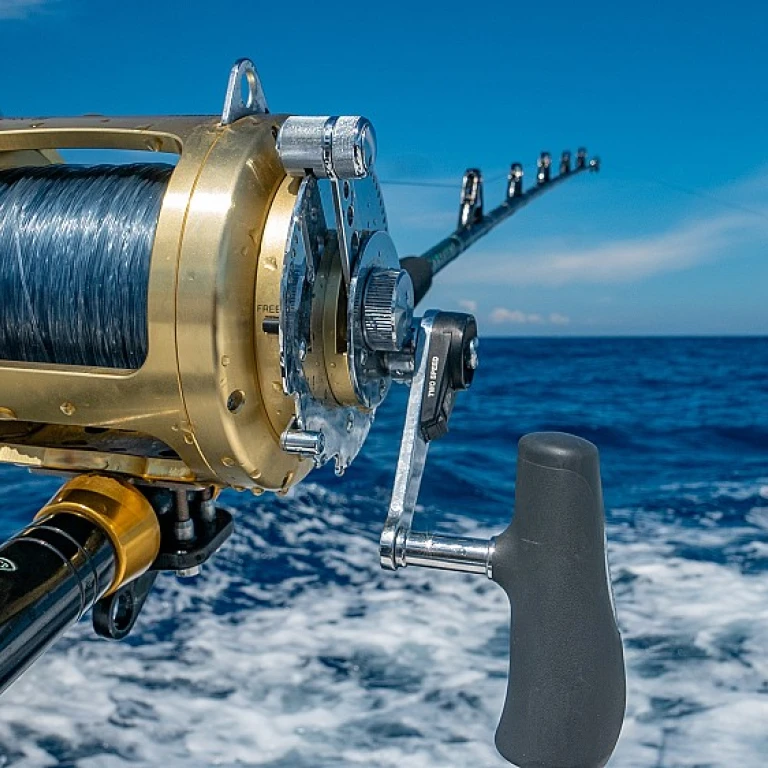

-large-teaser.webp)
-large-teaser.webp)
